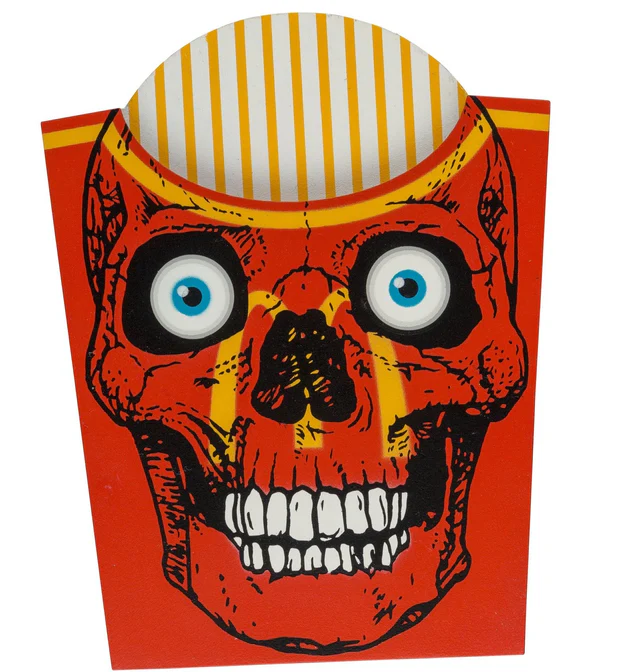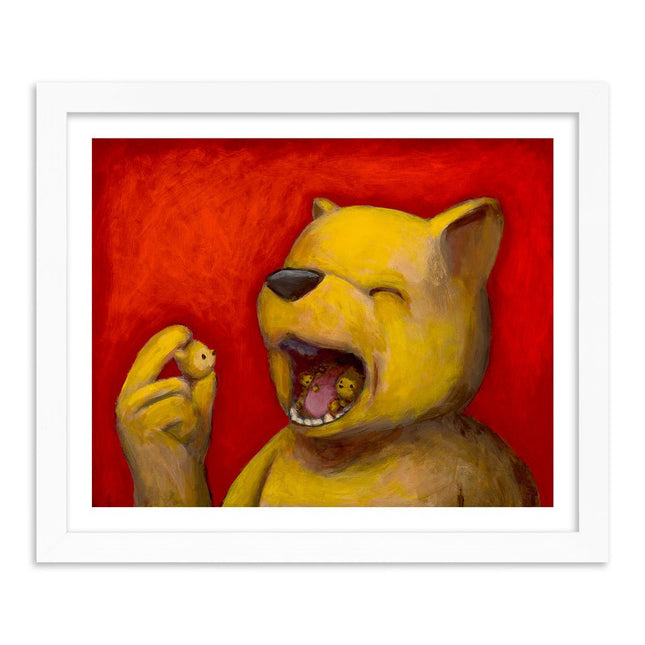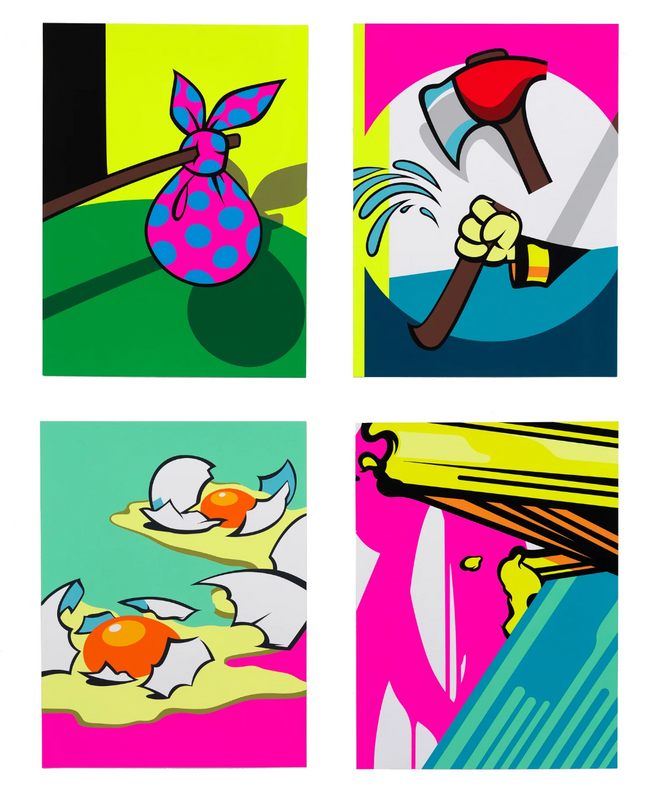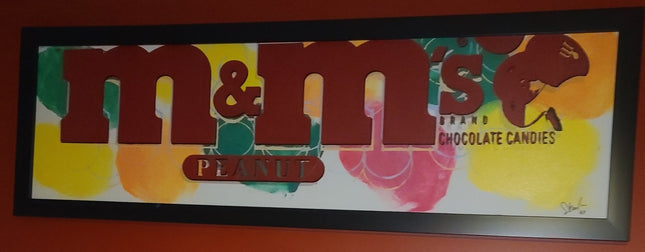
Food & Eating
-

Luke Chueh You Are What You Eat Archival Print by Luke Chueh
You Are What You Eat Limited Edition Archival Pigment Prints on 290gsm Moab Fine Art Paper by Luke Chueh Graffiti Street Artist Modern Pop Art. In 2003, Chueh moved to Los Angeles to further pursue a career in design. However, a lack of employment opportunities left him resorting to painting as a way to keep busy. From there, he got his start showing in the Los Angeles underground art scene, specifically in the Cannibal Flower art shows. Since then Chueh has quickly worked his way up the ranks of the LA art scene, establishing himself as an artist not to be ignored. Employing minimal color schemes, simple animal characters, and an endless list of ill-fated situations, Chueh stylistically balances cute with brute, walking the fine line between comedy and tragedy.
$308.00
-

Pose- Jordan Nickel Deconstructed Set Silkscreen Print by Pose- Jordan Nickel
Deconstructed Set Silkscreen Print by Pose- Jordan Nickel Hand-Pulled 15-Color on 160lb Cover Mohawk Superfine UltraWhite Paper Limited Edition Artwork. 2021 Signed & Numbered Limited Edition of 85 Artwork Size 12x16 Silkscreen Print Set of 4 Prints. In the rapidly evolving arena of modern art, where both pop and street art have established deep-rooted identities, Pose, also known as Jordan Nickel, introduces a fresh perspective with his 'Deconstructed Set Silkscreen Print'. A captivating set of four artworks, each piece showcases a meticulous attention to detail and a vibrant array of 15 hand-pulled colors. The choice of 160lb Cover Mohawk Superfine UltraWhite paper, complemented by a colorful finish, elevates the tactile sensation of the prints, offering a luxurious feel to the touch. Crafted in 2021, this limited edition resonates with Pose's signature style — a harmonious interplay of colors, intricate patterns, and thought-provoking deconstruction of familiar elements. This collection, limited to a mere 85 sets, possesses an aura of exclusivity, further heightened by Pose's personal signature on each print. The standardized size of 12x16 for each artwork ensures a cohesive aesthetic when displayed together, allowing the viewer to delve into the narrative that spans across the set. At a glance, each print stands as an independent story. From the intriguing portrayal of a polka-dotted pouch to the energetic imagery of a breaking egg, the artworks invite introspection into the seemingly everyday objects. Yet, when viewed collectively, they weave a tapestry of interconnected narratives, celebrating the eclectic spirit of street art merged with the iconic undertones of pop art. Pose's 'Deconstructed Set Silkscreen Print' is, undoubtedly, a testament to the boundless possibilities of artistic expression in contemporary times.
$1,252.00 $1,064.00
-

Steve Kaufman SAK M&Ms Dots HPM Serigraph Print by Steve Kaufman SAK
M&Ms Dots Limited Edition Hand-Embellished HPM 5-Color Serigraph Print on Canvas Framed by Steve Kaufman Graffiti Street Artist Modern Pop Art. 2008 Signed Custom Frame. "M&Ms" is a limited edition hand-pulled silkscreen mixed media on canvas by Andy Warhol protege Steve Kaufman (1960-2010). This piece is numbered and HC/50 and hand signed inverso. Measures approximately 16" x 47" (image). Known for his association with Andy Warhol, Steve Alan Kaufman (December 29, 1960 - February 12, 2010) were a great American pop artist, activist, and humanitarian. With the encouragement of his mother, Kaufman had his first show at the age of 8 at a Jewish Temple in the Bronx where he grew up. At just 14 he attained a scholarship to the Parsons School of Design while going on to attend Manhattan’s School of Visual Arts (SVA) where he met contemporary artists such as Keith Haring and Jean-Michel Basquiat.
$1,917.00 $1,629.00




